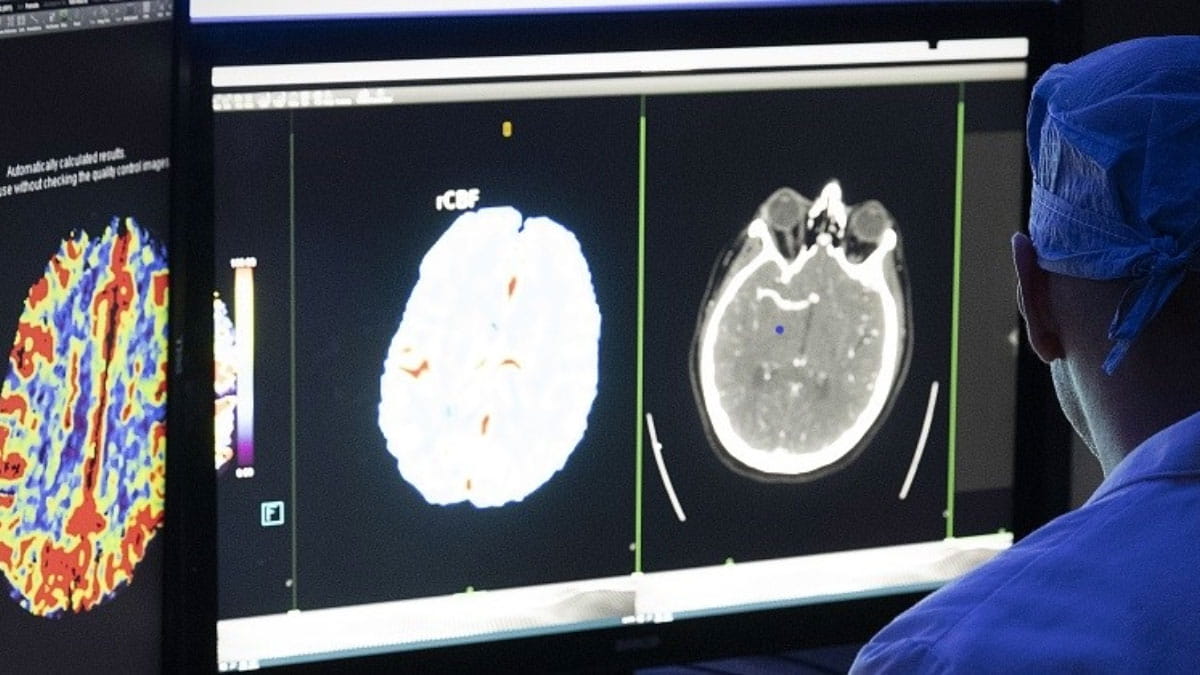New research identifies barriers and strategies to inform TBI screening adoption in behavioral health care settings
 Traumatic brain injury (TBI) is caused by an external force, such as a blow or jolt to the head. Some TBIs can cause temporary or chronic issues with brain function, affecting thinking, understanding, movement, and behavior. Serious TBIs can lead to permanent disability or death. Knowing a patient's TBI history is crucial for professionals to start to understand their potential cognitive, behavioral, and emotional problems.
Traumatic brain injury (TBI) is caused by an external force, such as a blow or jolt to the head. Some TBIs can cause temporary or chronic issues with brain function, affecting thinking, understanding, movement, and behavior. Serious TBIs can lead to permanent disability or death. Knowing a patient's TBI history is crucial for professionals to start to understand their potential cognitive, behavioral, and emotional problems.
The Ohio State University Traumatic Brain Injury Identification Method (OSU TBI-ID) is a standardized procedure for gathering lifetime history of TBI through a short, structured interview. Although the OSU TBI-ID is an effective and long-established method for eliciting history of TBI, it has largely not been used by professionals in “real-world” treatment settings. Research funded by the National Institutes of Neurological Disorders and Stroke found barriers to its use and identified implementation strategies aimed to increase the adoption of TBI screening in behavioral health care organizations. The research titled, Identifying Barriers and Implementation Strategies to Inform TBI Screening Adoption in Behavioral Healthcare Settings, was published in The Journal of Head Trauma Rehabilitation.
Lead author Kathryn Hyzak, PhD, implementation scientist at The Ohio State University College of Medicine and Provost’s Faculty Fellow, and her team identified multilevel barriers to the adoption of the OSU TBI-ID through interviews with 20 behavioral healthcare providers across the United States. They then used these barriers to precisely identify implementation strategies that are aimed at accelerating the adoption, reach, implementation, scalability, and sustained use of the OSU TBI-ID in real-world practice settings. Implementation strategies are interventions that seek to improve how evidence-based interventions, like the OSU TBI-ID, are used and sustained in clinical and community-based settings.
“Our results suggest that multilevel implementation strategies that can mechanistically act on provider behavior, organizational factors, and system-level influences will be needed to overcome the complex barriers affecting TBI screening adoption and implementation,” Dr. Hyzak says.
The research team includes Alicia Bunger, PhD, MSW, Implementation Scientist and professor in the Division of General Internal Medicine in the College of Medicine; Jennifer Bogner, PhD, ABPP, professor of Physical Medicine and Rehabilitation at the Ohio State College of Medicine; and Alan Davis, PhD, associate professor and Director of the Center for Psychedelic Drug Research and Education in The Ohio State University College of Social Work.
Dr. Bogner has worked within the field of traumatic brain injury rehabilitation for more than 25 years. She, along with John Corrigan, PhD, ABPP, Professor Emeritus in the Department of Physical Medicine and Rehabilitation and Director of the Ohio Valley Center for Brain Injury Prevention and Rehabilitation, are the co-developers of the OSU TBI-ID. Dr. Bogner’s research focuses on behavioral and emotional regulation, substance misuse, community participation, and the long-term effects of TBI.
Through the study, the team identified implementation strategies that could increase motivation and buy-in, for example, to conduct TBI screening of clients treated in behavioral healthcare settings. One identified strategy is to involve county and state-level mental health and substance use boards to increase awareness of the problem among leaders and to build agreement for policy changes that would mandate organizations to screen for TBI. However, the team acknowledges that TBI screening is only the first step to providing optimal patient care.
Dr. Hyzak says that knowing a client’s lifetime history of TBI can be extremely helpful in understanding which clients might need additional interventions, like cognitive accommodations, to improve their likelihood of success in behavioral health treatment. Professionals will need to integrate both TBI screening and accommodations into existing treatment programs.
“We plan to evaluate some of these implementation strategies and their mechanisms to understand how they might improve the integration of TBI screening and accommodation in a future research trial,” Dr. Hyzak says.
